CBG Review: Everything to Know About Cannabigerol Research
Cannabigerol (CBG) has been described as the mother of all cannabinoids, yet many people still haven’t heard of it.
Let's take an in-depth look and review the research about CBG in 2020; from cannabigerol health benefits, to how non-psychoactive CBG works and comparing the differences of CBG vs CBD, it's cousin cannabinoid that is the most popular best-selling herbal ingredient in 2019. In our 2020 CBD overview, we touch on the probable outcome of how other cannabinoids could start sharing the spotlight with cannabidiol and CBG appears to be the next big cannabis compound in-line along with CBN (cannabinol).
But what’s the story with CBG? Does CBG have any proven wellness effects? As the world keeps expanding various cannabis plant extracts into their medicine cabinets, today, we’re explaining everything you need to know about cannabigerol in our ultimate CBG guide.
Contents
What is CBG?
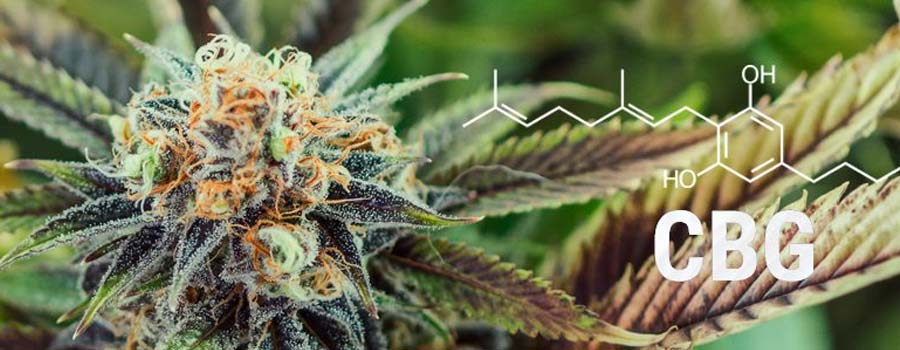
Cannabigerol, or CBG, is one of the hundreds of molecules within the cannabis plant. These molecules are called cannabinoids. You’ve probably already heard of the two best-known cannabinoids: THC and CBD. While there are is an overwhelming amount of content to digest online about cannabidiol, from the best CBD oils, edible gummies, skincare and so forth – today, in 2020 – CBG is increasingly making a name for itself as well. Many cannabis researchers believe it is the next big cannabinoid to be extracted and even exploited to go mainstream in the new decade.
CBG is unique among cannabinoids because it plays a role in the synthesis of other cannabinoids. It also plays a significant role in the overall chemical composition of the cannabis plant. That’s why some call CBG “the mother of all cannabinoids” as it is largely considered the parent compound because Cannabigerol acts as the first form of THC, CBD and cannabichromene (CBC).
Scientists have identified over 450 cannabinoids in the cannabis plant. So what makes cannabigerol special? Here’s what one research paper had to say about cannabigerol:
“Of the hundreds of unique chemicals produced by the herbal species cannabis sativa, none plays a more pivotal role than cannabigerol.”
Over the past three decades, cannabigerol has been studied for pain relief, anti-inflammatory effects, reduced anxiety, nausea, and anti-cancer effects, among other benefits. Studies have generally been very positive about the effects of CBG, with multiple studies finding that CBG improved symptoms of diseases or even negated the effects of cancer cells.
Like CBD, CBG is non-psychoactive. It doesn’t produce the “high” typically associated with marijuana consumption (which comes from another cannabinoid, THC).
Why haven’t you heard of CBG before? Well, most marijuana and hemp strains only contain small amounts of CBG. It takes a lot of cannabis to create a little bit of CBG.
Despite its low yield and lesser-known status, however, CBG has been linked to some crucial therapeutic benefits.
How Does CBG Work?
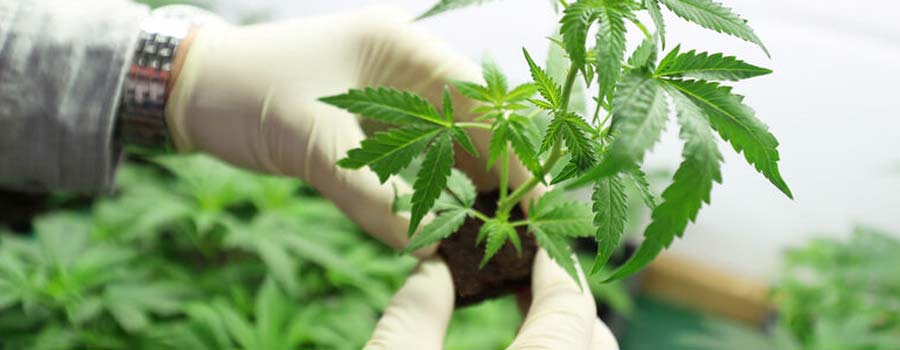
Cannabigerol is called the mother of all cannabinoids for good reason: many cannabinoids within the cannabis plant, including CBD and THC, are created through the actions of the CBG molecule.
Specifically, CBGA, the acidic precursor to cannabigerol (CBG) is the genesis of many major cannabinoids derived from cannabis. Cannabidiol (CBD) and tetrahydrocannabinol (THC) both owe their existence to CBGA.
With that in mind, CBGA is seven cannabinoids in one: CBGA creates the genesis of not only seven analogs of itself, but also the acidic precursors for all other major cannabinoids. CBGA is primarily converted to THCA, CBDA, or CBCA as the cannabis plant matures.
This genesis process is also the reason why there’s little CBG in most hemp and cannabis plants: as the plant matures, more and more CBGA gets converted into THCA, CBDA, CBCA, and other acidic precursors, leaving only a small amount of the source compound behind.
CBGA only creates CBG during decarboxylation: when the remaining CBGA is heated during the decarboxylation process, it crates CBG.
Effects of CBG
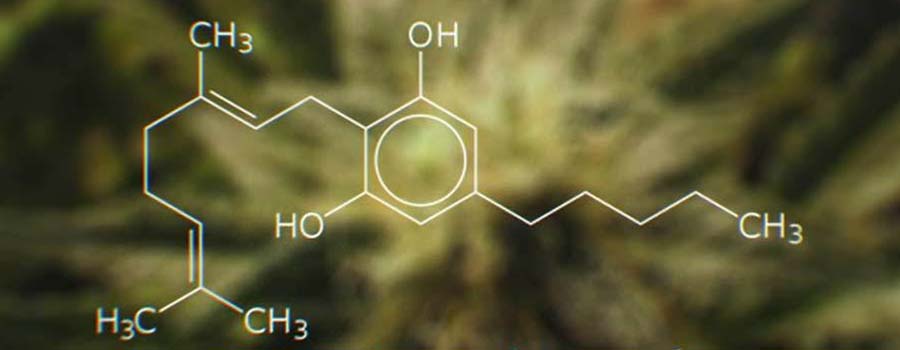
People are talking about CBG more frequently today because CBG has been linked to certain health benefits and therapeutic effects. And, like CBD, CBG does not have psychoactive effects. Individuals can enjoy the benefits of CBG without getting high.
So what exactly are the benefits of CBG? And have any of those benefits been proven?
Cannabigerol has been observed to have one of the widest-ranging impacts of any cannabinoids within the cannabis plant.
First, researchers have found that CBG works by activating α2-adrenoceptors, binding to CB1 and CB2 receptors, and blocking CB1 and 5-HT1A receptors.
Other research has indicated that CBG also blocks transient receptor potential M8 (TRPM8), activates TRPA1, TRPV1, and TRPV2 channels and inhibits the reuptake of endocannabinoids.
In layman’s terms, CBG affects a lot of different parts of your physiology. That’s why CBG is thought to have such powerful and diverse effects. These effects are linked to CBG’s ability to interact with the endocannabinoid system and act as a mild CB1 receptor antagonist, all without the psychoactive effects of THC.
Medical Benefits of CBG
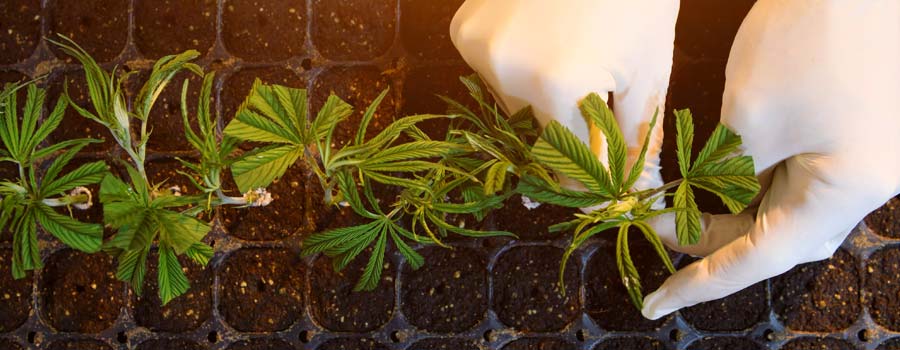
CBG needs more research to confirm its therapeutic benefits, if it has any benefits at all. Certain studies, however, have been surprisingly positive regarding the potential benefits of CBG.
At this point: CBG is a lot like CBD: there is plenty of anecdotal evidence that CBD relieves anxiety, reduces inflammation, enhances focus, or soothes the body in other ways. However, more research needs to be done to verify the benefits.
In certain small studies to date, CBG has indicated similar results, including anti-anxiety, anti-cancer, and anti-inflammatory effects. However, it’s far too early to confirm these benefits, and more large scale human studies need to be done.
At the bottom of this page, you’ll see a selection of major, peer-reviewed studies involving CBG that have taken place over the last three decades. As more research is performed, we’re starting to understand more about the potential medical benefits of CBG.
To be clear, CBG has not been extensively studied and it’s impossible to definitively state whether CBG has specific benefits or not.
How to Buy CBG

CBG is a new and growing corner of the cannabis space. Because of its newness, there are not currently any products that specifically market themselves as CBG strains, CBG supplements, or CBG formulas.
You can, however, purchase full-spectrum hemp products that contain as much of the plant as possible. These products will likely contain a certain amount of CBG, although it’s difficult to say how much CBG is being absorbed by your body.
Many CBD users only use full-spectrum hemp because of its “entourage” or “synergistic” effects. Essentially, some believe that full-spectrum CBD is more effective than simply CBD isolate. Studies seem to reinforce this idea, showing that your body can absorb more of the active ingredients in CBD when you take the “full-spectrum” of ingredients and not just one specific ingredient.
CBG may be one reason why full-spectrum hemp is more effective. CBG seems connected to all other cannabinoids in the cannabis plant. Could CBG impact the absorption of CBD? More research is needed to verify these effects, but it’s certainly possible.
Is CBG Legal?

Unlike CBD, CBG has not been approved as a drug by the FDA. Because CBD has been approved as a drug, CBD cannot be added to certain products like foods or dietary supplements.
CBG, however, is exempt from those same restrictions. That means you can find CBG products as foods and dietary supplements. CBG is legal and accessible nationwide without much issue.
Could the FDA Approve a CBG Drug in the Future?

The Food and Drug Administration has already approved a drug based on the cannabinoid CBD. That drug, Epidiolex, is a synthetic form of CBD that has been proven to treat certain rare types of seizures.
Could CBG be the next cannabinoid approved by the FDA? It’s certainly possible.
If the FDA approves CBG as a drug at some point in the future, then it seems reasonable to assume that CBG foods and supplements would no longer be available. However, that’s not the case: there’s an exclusion to this rule. If companies are already making foods or dietary supplements with an ingredient, say, CBG, then the FDA’s approval of a new drug, say, a CBG drug, would not invalidate those products. Because people are already making CBG foods and supplements, it seems unlikely that CBG will be banned at any point in the future.
To summarize: CBG is currently legal nationwide as long as it doesn’t contain more than the legal limit of THC, which is currently 0.3%. Since CBG can be extracted from hemp, like CBD, CBG will likely continue to be legal nationwide for the near future.
How CBG Interacts with the Endocannabinoid System
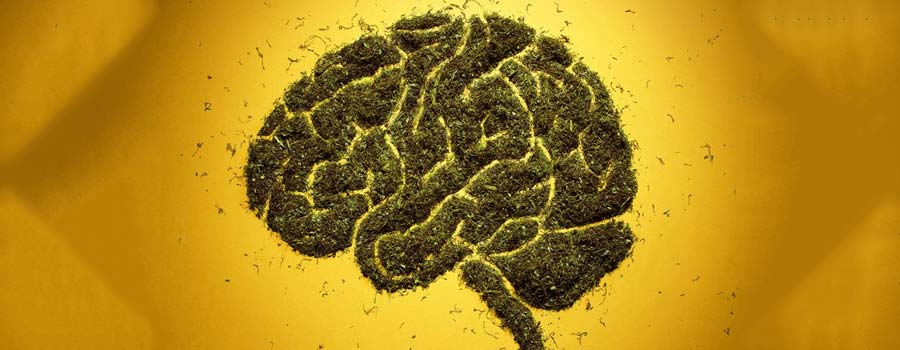
To understand how CBG works, it helps to understand how the endocannabinoid system works, including how CBG interacts with that system.
The endocannabinoid system or ECS is a network of microscopic cellular receptors spread throughout the body. ECS receptors can appear on the surface of individual cells. Some cells have no receptors, some have one or two receptors, and some have many more than that. The result is that the endocannabinoid system is scattered throughout nearly every organ and tissue of the human body.
New research suggests that ECS plays a significant role in the human body. Some scientists believe that deficiencies in the endocannabinoid system lead to common diseases and health conditions including migraines, fibromyalgia, arthritis, and even cancer.
Each cluster of ECS receptors acts as a neurotransmitter, which means it sends special chemicals to your brain that affect your mood.
These receptors are also affected by specialized chemicals called cannabinoids, yes, the same chemicals in the cannabis plant. Your body produces cannabinoids on its own, although you can also get cannabinoids from cannabis.
It’s not just humans that have an endocannabinoid system. All vertebrates have the same system. That means mammals, birds, reptiles, amphibians, fish, and other animals all produce endocannabinoids.
There Are Two Categories of Cannabinoids
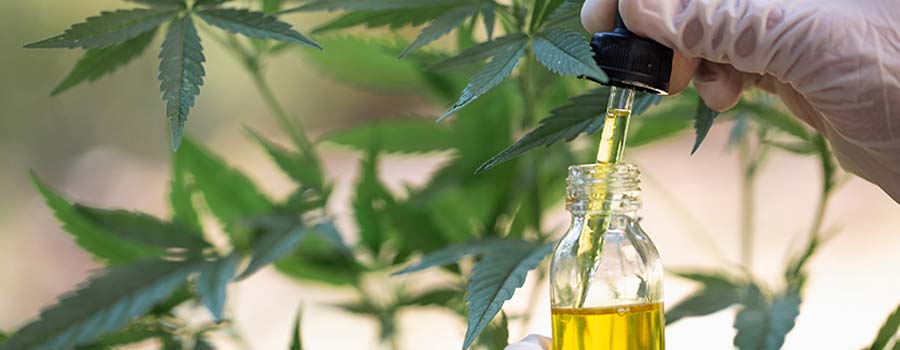
To understand cannabinoids like CBG further, we need to talk about the types of cannabinoids. There are two main categories of cannabinoids: endocannabinoids and phytocannabinoids:
Phytocannabinoids
Phytocannabinoids are cannabinoids found in the cannabis plant. The word ‘phyto’, which means from plants, is used to differentiate these cannabinoids from similar molecules produced by the human body.
Endocannabinoids
Endocannabinoids are similar molecules, but they are produced by the human body naturally. They are part of the endocannabinoid system that helps regulate most other systems throughout the body.
Both endocannabinoids and phytocannabinoids are molecules that exist naturally within either the human body or cannabis plants.
Here’s where things get interesting: phytocannabinoids bind perfectly to our endocannabinoid system receptors. They bind to our ECS receptors in a virtually identical way to the endocannabinoids produced by our own body. This connection has been described as a “lock and key” mechanism.
As one research paper on cannabigerol (CBG) explains:
“In a cellular game of impersonating a party guest, phytocannabinoids mimic endocannabinoids to gain entry into the ECS.”
So what evolved first? Endocannabinoids or phytocannabinoids? A 2008 review article reported that cannabinoid receptors in the endocannabinoid system evolved long before the phytocannabinoids in cannabis:
“Humans likely did not evolve receptors for a cannabis compound. Indeed, the cannabinoid receptor evolved long before cannabis.”
In other words, our body’s endocannabinoid system emerged to feed itself “medicine” in the form of endocannabinoids.
ECS Receptor Types: CB1 and CB2 Receptors
The endocannabinoid system consists of millions of specialized cellular receptors that bind perfectly with both endocannabinoids (the cannabinoids made by your body) and phytocannabinoids (the cannabinoids you get from plants like marijuana).
Not all ECS receptors are made equal, however. Scientists have identified two primary ECS receptors, including CB1 and CB2 receptors.
CB1 Receptors
CB1 receptors are found in the greatest density within the brain and central nervous system (CNS), although they’re less common throughout the rest of the body.
CB2 Receptors
CB2 receptors are primarily found in the tissues, glands, and organs of the immune system. Scientists have found some CB2 receptors in the brain and CNS, although these receptors are vastly outnumbered by the CB1 receptors in the brain.
CBG Binds with Both CB1 and CB2 Receptors

Why are we telling you all of this information about the endocannabinoid system? We’re telling you this information because it helps understand the value of cannabigerol (CBG).
CBG binds to CB1 and CB2 receptors.
That means CBG can affect endocannabinoid system receptors in your brain and throughout the rest of your body. Theoretically, that means you can get more effects from one single molecule.
Could CBG Be the Fourth Chemotype (After Indica, Sativa, and Ruderalis)?
Another reason why CBG is making headlines is that research indicates that cannabigerol could be the fourth chemotype of the cannabis plant.
You’ve probably heard of the two best-known chemotypes: sativa and indica. You may have even heard of the lesser-known ruderalis. However, research going back to 1987 has suggested that ‘CBG-dominant’ strains of cannabis could be the fourth chemotype.
The CBG chemotype is notable because it contains a huge concentration of CBG (approximately 90%) with relatively little THC (less than 0.001%). That high concentration of CBG makes the CBG chemotype significantly different than the other chemotypes:
- Indica: 25% THC and 3% CBG
- Sativa: 25% THC and 1% CBG
- Ruderalis: 1% THC and 5% CBG
- Cannabigerol: 0.001% THC and 90%+ CBG
Cannabigerol (CBG) and Cannabigerivarin (CBGV)
Growing research has indicated that there could be powerful benefits behind an analog of cannabigerol called cannabigerivarin, or CBGV.
Like most cannabinoids, CBGV produces no psychoactive effects when ingested or inhaled.
However, research has shown that CBGV may have therapeutic effects of its own. Studies have shown that CBGV can boost the ability of cellular receptors in the endocannabinoid system to more readily bind with THC molecules, for example.
Some studies also suggest that CBGV boosts CBD metabolism within the body, enhancing the absorption of CBD and making CBD more potent. This could be the much-discussed “entourage” effect created by full-spectrum CBD.
Scientific Benefits of CBG: Major Studies and Peer-Reviewed Research on CBG

CBG hasn’t been extensively studied. However, there has still been about a dozen major, peer-reviewed, published studies on cannabigerol (CBG) and how it works. Below, we’ll discuss each of these studies and explain what researchers found.
A study entitled “Cannabigerol Action at Cannabinoid CB1 and CB2 Receptors” was published in Frontiers in Pharmacology in 2018. The study explored how cannabigerol could bind with CB1 and CB2 receptors within the endocannabinoid system. Researchers concluded that “the results indicate that CBG is indeed effective as [a] regulator of endocannabinoid signaling” because it bound with both CB1 and CB2 receptors.
A study called “Beneficial effect of the Non-psychotropic Plant Cannabinoid Cannabigerol on Experimental Inflammatory Bowel Disease” was published in Biochemical Pharmacology in 2017. The study sought to explain how CBG could treat people suffering from inflammatory bowel disease (IBD). Researchers gave CBG to mice that had been induced with colitis. CBG positively impacted several key metrics associated with colitis, and researchers ultimately concluded that “CBG could be considered for clinical experimentation in IBD [inflammatory bowel disease] patients.”
Another study called, “Cannabigerol is a Novel, Well-tolerated Appetite Stimulant” was published in Psychopharmacology in 2016. That study analyzed how CBG could potentially stimulate the appetite. The study was the first to suggest that cannabigerol could increase appetite:
“We demonstrate for the first time that CBG elicits hyperphagia [increased appetite] by reducing latency to feed and increasing meal frequency.”
Researchers also praised the safety profile of CBG, indicating that there were “no adverse effects on any parameter in the neuromotor tolerability test battery.” In other words, cannabigerol increased appetite without any psychoactive effects or notable side effects, unlike THC.
In 2015, researchers published a study analyzing the neuroprotective effects of cannabigerol on Huntington’s disease. Researchers gave CBG to mice that had been induced with Huntington’s disease. Huntington’s disease degrades a person’s physical and mental abilities and there is no known cure. Researchers found that cannabigerol could have neuroprotective properties and reduce the likelihood of brain decay or Huntington’s disease:
“CBG was extremely active as a neuroprotectant in mice, improving motor deficits and preserving striatal neurons against toxicity.” Researchers also observed the antioxidant properties of CBG, claiming that cannabigerol “improved the levels of antioxidant defenses” in the mice.
Based on the results of this study, researchers recommended further research into cannabigerol and Huntington’s disease:
“Our results open new research avenues for the use of CBG, alone or in combination with other phytocannabinoids or therapies, for the treatment of neurodegenerative diseases such as HD [Huntington’s disease].”
In a 2014 study analyzing how cannabinoids affect bladder function, cannabigerol (CBG) proved to be more effective than THC, CBD, and others. Researchers analyzed how cannabinoids like CBG, CBD, CBDV, THCV, and CBC impacted bladder contractibility and found that CBG offered the greatest efficacy followed by THCV, CBD, and CBDV (in that order). Because of these results, researchers suggested that CBG could be used for the treatment of bladder disorders because,
“CBG…reduced acetylcholine-induced contractions in the human bladder.”
Some studies have analyzed how CBG could treat cancer. A 2014 study called, “Cannabinoids as Therapeutic Agents in Cancer” explored how cannabinoids, including CBG and its analog CBGV, could treat different types of cancer. Researchers analyzed how CBG and CBGV impacted common cancers like breast cancer, oral cancer, bone cancer, pancreatic cancer, lung cancer, lymphoma, and thyroid carcinoma.
Researchers were specifically looking at the expression of CB1 and CB2 receptors in cancer patients. Different cannabinoids will affect different CB1 and CB2 receptors in different parts of the body.
The study concluded by stating that cannabinoids “modulate the growth of hormone-sensitive breast cancer cells” and that “endocannabinoids such as anandamide (AEA) are important lipid ligands regulating cell proliferation, differentiation, and apoptosis [cellular suicide]”. Furthermore, cannabinoids like CBG “exert a direct anti-proliferative effect on tumors of different origin.”
In layman’s terms, this study showed that cannabinoids like CBG And CBGV inhibited the growth of multiple types of cancerous tumors.
A similar study from 2014 connected CBG to anti-cancer activity in the colon. In the study entitled, “Colon Carcinogenesis is Inhibited by the TRPM8 Antagonist Cannabigerol”, researchers found that CBG was effective at treating cancer via multiple underlying mechanisms:
“CBG promoted apoptosis…and reduced cell growth in CRC [colorectal cancer] cells.”
In other words, CBG encouraged existing cancer cells to kill themselves and reduced the further growth of cancer cells. Researchers also noticed other anti-cancer effects:
“CBG inhibited the growth of xenograft tumours, as well as chemically induced colon carcinogenesis…[CBG] hampers colon cancer progression in vivo and selectively inhibits the growth of CRC cells.”
Based on all of these anti-cancer effects, researchers concluded that,
“CBG should be considered…in [colorectal cancer] prevention and cure.”
These weren’t the only two studies involving cannabigerol (CBG) and cancer. In 2013, researchers published a study exploring CBG’s use as an anti-cancer drug. The study investigated the cancer-fighting properties of CBD, CBG, and CBGV, looking specifically at leukemia. The study’s researchers concluded that,
“These agents [CBD, CBG, and CBGV] are able to interfere with the development of cancerous cells, stopping them in their tracks and preventing them from growing.”
Researchers were also encouraged by the idea that they could use specific dosages to destroy cancer cells:
“In some cases, by using specific dosage patterns, they [the cannabinoids like CBG] can destroy cancer cells on their own.”
Researchers also praised the fact that the cannabinoids are cheap to make, which could potentially make them excellent cancer-fighting drugs moving forward:
“Significantly, these compounds [the cannabinoids like CBG] are inexpensive to produce and could result in much more cost-effective anti-cancer drugs in the future.”
We have a long way to go before CBG is definitively linked to anti-cancer benefits. We need large-scale human trials. However, early research on the anti-cancer benefits of CBG is very promising.
Some research has suggested that cannabigerol could treat multiple sclerosis (MS). This 2014 study entitled, “A Cannabigerol Derivative Suppresses Immune Responses and Protects Mice from Experimental Autoimmune Encephalomyelitis” explored how CBG could treat autoimmune conditions like multiple sclerosis. Researchers concluded that:
“A cannabigerol quinone has been shown to alleviate symptoms in a viral model of multiple sclerosis (MS). Hence, we studied T cells and macrophages as targets for [CBG] and its efficacy in an autoimmune model of MS.”
Researchers were unable to definitively state why cannabigerol impacted MS. However, researchers found that there were decreases in systemic inflammation and improved immune function after CBG treatment. Nevertheless, “The mechanisms underlying the improvement…are not clear.”
Researchers in the study did conclude that CBG functioned as an “immunosuppressive compound targeting PPARy and CB2 receptors” without having adverse side effects or toxicity. Because of these effects, CBG “represents a potential therapeutic agent for the treatment of human diseases with both inflammatory and autoimmune components.”
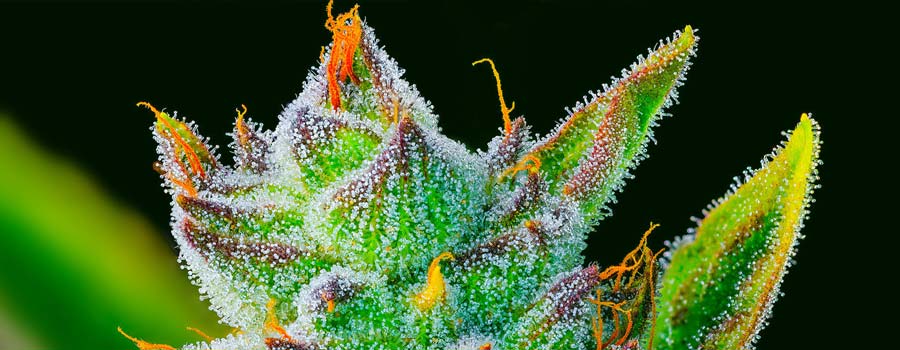
A separate study published in 2012 reinforced the idea that CBG could treat multiple sclerosis through anti-inflammatory effects. Researchers in this study described how cannabigerol treated the symptoms of MS by acting “as a potent anti-inflammatory agent”, for example.
Because of the results of this study, researchers concluded that cannabigerol has a “high potential for drug development against MS and perhaps other neuroinflammatory diseases.”
Ultimately, cannabigerol has not been extensively studied particularly in large-scale human trials. However, early research on mice and cells has been promising particularly with how CBG could treat cancer, multiple sclerosis, and neurodegenerative diseases, among other conditions. Expect to see more CBG research as we head into 2020.
Final Word: What’s Next for Cannabigerol?
Cannabigerol (CBG) could be the next hottest cannabinoid as the demand for cannabis oil-infused products is at an all time high in human history. You’ve already heard of the two best-known cannabinoids in the world; THC and CBD. Now, a third cannabinoid could be linked to positive health benefits of its own. While CBG may be new, it could enjoy the fast track to the top of the charts in terms of popularity based on the path CBD has taken the past few years. We have already saw more cannabis science surface lately, as two new cannabinoids were discovered in THCP and CBDP recently. One thing is for sure, cannabis is one of the biggest initiatives on the medical research forefront in the 2020 decade and CBG could be one of it's newest marvels just like CBD has performed.
Based on the research above, CBG is linked to everything from anti-cancer benefits to anti-inflammatory effects to neuroprotective effects and more. However, more research needs to be done to verify these benefits.
Stay tuned to see what the future holds for cannabigerol (CBG) in 2020 and beyond as the cannabis-fueled green rush is .


